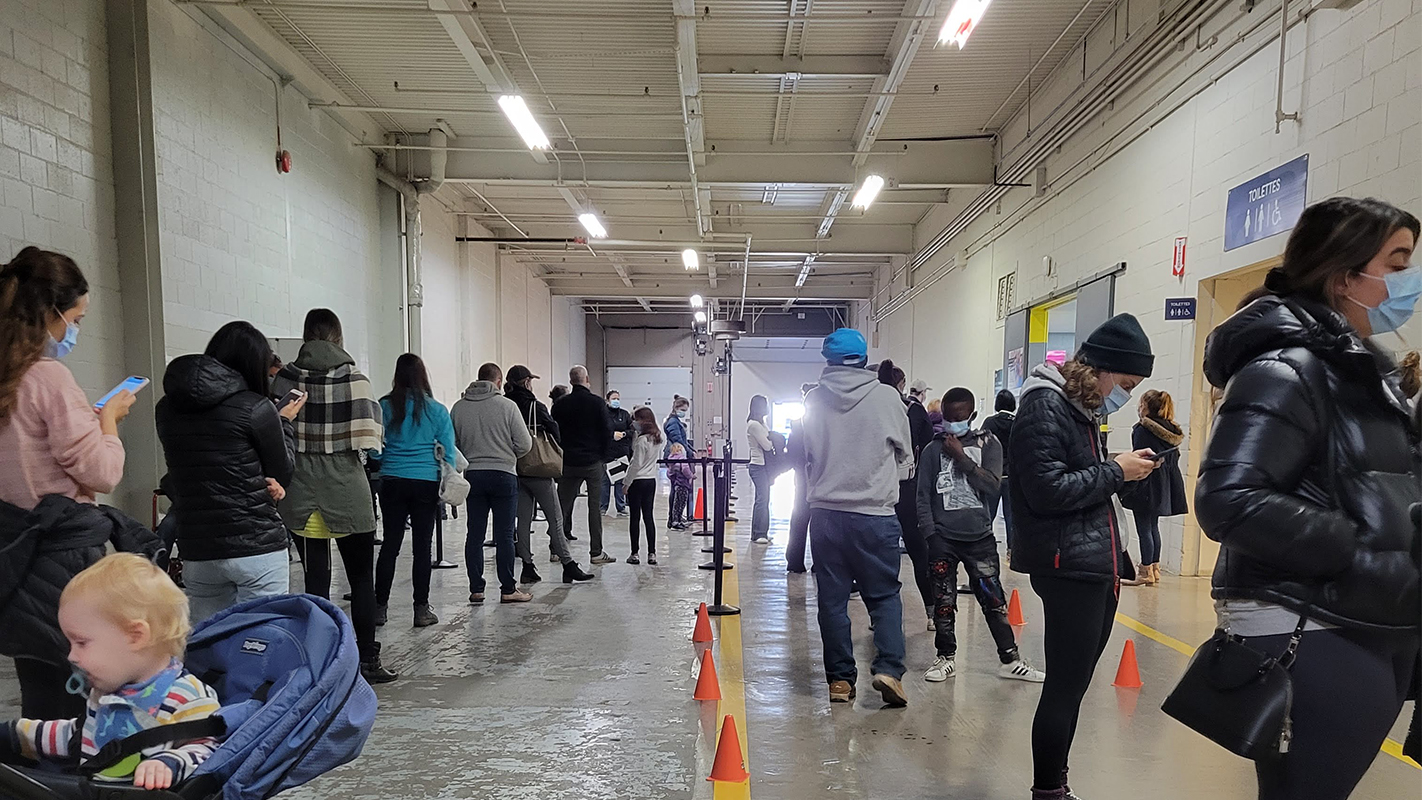By Gordon Lambie
Local Journalism Initiative
On Tuesday afternoon Doctor Alain Poirier, the regional public health director for the Eastern Townships, asked people in the region to self-isolate following a positive result on a rapid-test instead of going to confirm at one of the six local testing centres.
“Our labs are lagging with the demand,” Poirier said, arguing that despite the previous recommendation that people should confirm a positive result with the more reliable PCR tests, people should now just consider themselves positive with a positive result in order to help clear the processing backlog. He clarified that no one who wants another test will be turned away but suggested that with long wait times for an appointment and the likelihood of ending up with the same result anyway, it is better for the individual and the system to just follow isolation procedures from day one.
The public health director said that there are 30 different categories of people who require testing and taking the general public out of the mix could free up as many as 900 of the roughly 2,400 tests being processed in the region each day.
Those who do decide to follow the recommendation will also be required to inform close contacts themselves. Whereas public health follows up with possible contacts following a positive lab test, Poirier said that the onus is on the individual when it comes to the take-home tests. He reiterated the fact that a symptomatic person needs to self-isolate for ten days following a positive result, and that close contacts should do so for 14 days to monitor for symptoms, and then 10 days if they end up developing COVID-19.
Acknowledging that not everyone has been able to get access to the at-home test kits yet, Poirier encouraged people who are concerned to contact family or friends, suggesting that it is likely a kit exists among people’s networks, even if they don’t have them within their own homes.
As a result of the shift, Poirier also said that people should expect a change in the way that Covid numbers are being reported on a daily basis, given that the “daily numbers” are based on laboratory results. While he recognized that this might prove a difficult adjustment for people who tend to follow the statistics, he argued that the case numbers are not as important a figure for tracking the progression of the virus as hospitalizations and deaths, which will remain available.
The public health director also made it very clear that the recommendations he made on Tuesday might change as early as the next day depending on decisions made on the provincial level.
There was no additional announcement from the province on Tuesday, although Premier Francois Legault posted on Twitter that Quebec is faced with “difficult choices,” and suggested that more restrictions are to be expected on Wednesday.
According to Poirier, the most recent analyses at the provincial level indicate that 75 to 80 per cent of all cases in the province are the more contagious Omicron variant now. Looking at the situation in the Eastern Townships, he said that although the region is no longer the hardest hit in Quebec, that is due to the situation in other regions getting worse, and not so much that things here are getting better.
The INSPQ, the province’s institute of public health, reported 2473 active cases in the Eastern Townships on Tuesday, alongside 41 hospitalizations. Although the total number of people in hospital remained unchanged from Monday’s report, two more of those people were in intensive care than on the previous day.
The Province of Quebec reported 5,043 new cases of COVID-19 on Tuesday, setting a new record high both in the number of daily cases and in active cases, which reached 29,318. The new cases increased the total number of people infected since the start of the pandemic to 495,337, making it very likely that the province will have surpassed 500,000 total cases by Wednesday’s update.
The overall number of hospitalizations in the province increased by eighteen on Tuesday, reaching 415 with 88 in intensive care. There were also eight new deaths recorded, and 1,437 active outbreaks being monitored.
On the vaccination front, 53 per cent of the province’s 5-11 year olds had received their first dose of vaccine as of Tuesday.





